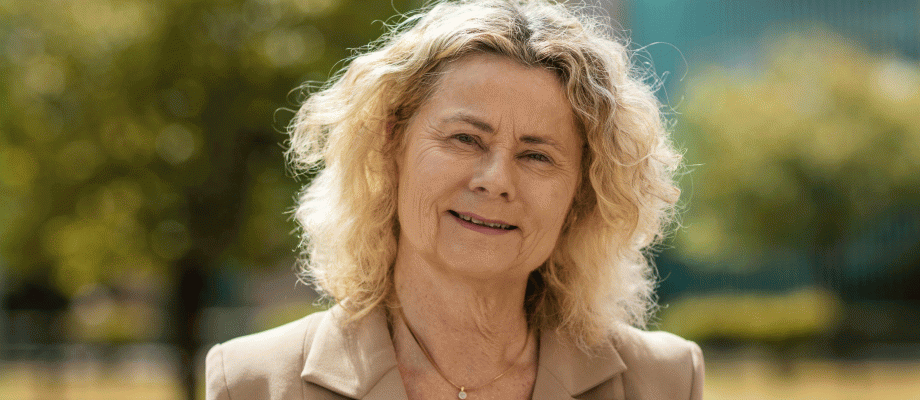COLUMN. Having now begun its work, the new Faculty Board has identified the faculty’s potential for continued educational development in digital and hybrid teaching and the technical status for accomplishing this as an important area. Agneta Holmäng discusses this in her latest column.
Autumn is here, with its colorful displays and cool air. Along with the arrival of autumn, our new faculty board has begun its work in earnest. Last week we gathered for an in-person meeting in the R Building at Sahlgrenska University Hospital in Mölndal. Board Member Ola Rolfson, a professor of orthopedics, arranged a very interesting tour in connection with the meeting. Among other things, we visited the Laboratory for Motion Analysis, also known as the Walking Lab; the Simulation Center; and the newly established Center for Bionics and Pain Research. It was great fun and rewarding for the Board, and we plan to continue holding some of our meetings in the clinics. Visiting outstanding research and educational environments in our organization can help the Board have grounded discussions. We plan to hold our next meeting, in December, at GoCo Health Innovation City to learn more about the exciting cluster within the life sciences emerging there.
Best possible technology for hybrid teaching
A key question for the Board, of course, is how we can best build on the positive experiences of digital teaching. This will require a strategy, especially for staying updated on the best possible technology for hybrid teaching. Under the leadership of Axel Wolf, the REDO group (Reference Group for Transitioning to Digital Teaching and Examinations) is doing very good work in this area. I would like to urge all employees with an interest in teaching to join the new Teams channel, where we can inspire each other, engage in discussions, and share experience about educational challenges with digital and hybrid teaching.
This week the Swedish Research Council is announcing the award of its annual large call for project proposals. I hope for, and expect, Sahlgrenska Academy to do well. I would also like to take this opportunity to highlight our Core Facilities, which to date have had great success in the Swedish Research Council’s call for infrastructure proposals. This year alone, Core Facilities has been awarded about SEK 30 million within the fields of microscopy, proteomics, and protein production, demonstrating that we have first-rate technology and analysis platforms to offer our researchers.
The planning documentation phase begins in early November
The updated program document (zero document) for Sahlgrenska Life is largely complete. The exceptions are odontology, the Skills Centre, and translational clusters, where further work needs to be done. This should be completed within a few weeks. The planning documentation phase begins in early November and continues until the beginning of next autumn. It will result in detailed construction documents that will serve as the basis for a new rental proposal. We then have about five months to decide on the rental agreement offered us. In this context, I would like to take the opportunity to thank everyone who has taken part in the various working groups involved in this process.
The program review has also provided a clearer picture of how much space the University of Gothenburg plans to rent and a preliminary indication that our premises costs will increase by about 30 percent once we move into these buildings. Even if we did not make this move, our premises costs would increase by about nine percent for the premises we currently occupy, with no adaptations to future needs for our activities and operations.
We need a responsible holistic approach
The University of Gothenburg currently has many projects that will require new premises for various activities. At this semester’s Vice-Chancellor’s discussions held a few months ago, we pointed out that a responsible holistic approach to our premises is needed to deal with future financial challenges resulting from major new construction.
In the risk analysis done by Sahlgrenska Academy, which we presented at the meeting with the Vice-Chancellor, the lack of secure storage and management of research data within the University poses a serious threat. Several other faculties also need to be able to store large amounts of sensitive research data securely, and we need to address this issue as soon as possible.
Finally, I can report that the government-proposed high profile specializations that were supposed to serve as the basis for the University’s application for strategic research funding are being postponed. In previous columns in Akademiliv, I have described the criticisms this idea has received from almost every major higher education institution in Sweden. Now the research funding bodies have been tasked with further developing the concept of these high profile specializations, with their launch possibly no sooner than 2024.
Enjoy the autumn!
Agneta Holmäng











